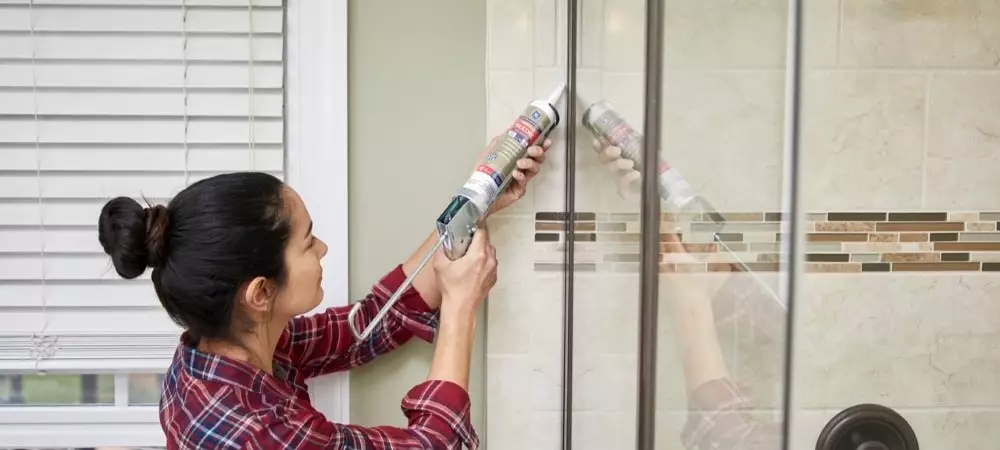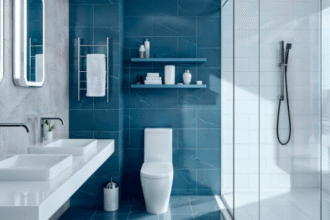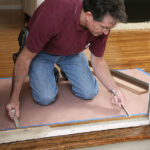Introduction to Shower Door Seal
When it comes to creating a serene and functional bathroom oasis, every detail matters. One often-overlooked element is the shower door seal. This small but mighty component plays a crucial role in maintaining your bathroom’s integrity and ensuring an enjoyable shower experience. A reliable shower door seal prevents water from escaping, protects your floors, and contributes to the overall aesthetic of your space. Let’s dive into why this simple feature is essential for any well-designed bathroom and how it can enhance both functionality and style!
The Purpose of a Shower Door Seal
A shower door seal serves a critical function in any bathroom. Its primary purpose is to prevent water from leaking out of the shower enclosure, keeping your floor dry and safe.
When you take a shower, water splashes and can easily escape through gaps. A good seal blocks this leakage effectively.
Additionally, it plays a role in maintaining the temperature inside the enclosure. By minimizing airflow, it helps keep the warm air contained for a more enjoyable experience.
Shower door seals also help reduce noise by dampening sound vibrations that occur during use. This subtle feature adds an element of tranquility to your bathing routine.
Investing in quality seals means fewer worries about mold or mildew forming due to moisture accumulation outside the shower space. Properly installed seals enhance both functionality and aesthetics in your bathroom environment.
Different Types of Shower Door Seal
Shower door seals come in various types, each designed to cater to specific needs and preferences. The most common type is the vinyl seal. It’s flexible and easy to install, making it a popular choice for DIY enthusiasts.
Another option is the rubber seal, known for its durability. Rubber seals provide excellent insulation against water leaks and can withstand temperature changes better than other materials.
For those seeking an elegant look, there are also magnetic seals. These create a tight closure by using magnets on either side of the door frame. They not only prevent leaks but also add a sleek aesthetic to your bathroom.
Foam seals are available as well. They’re lightweight and offer simple installation while effectively minimizing water escape from shower doors.
With so many options available, it’s essential to choose one that matches both your style and functional requirements.
Benefits of Using a Shower Door Seal
A shower door seal is more than just a minor accessory; it plays a crucial role in enhancing your bathroom experience.
First and foremost, it prevents water leakage. This simple strip can save you from dealing with slippery floors and costly water damage.
Additionally, shower door seals improve energy efficiency. By keeping warmth inside the shower stall, they help maintain hot water temperatures longer.
You’ll also appreciate their noise reduction capabilities. A well-fitted seal minimizes the sound of running water, creating a tranquil bathing environment.
Another benefit is hygiene. Seals keep moisture contained, reducing the growth of mold and mildew around your bathroom fixtures.
Installing a quality shower door seal elevates your bathroom’s aesthetic appeal. With various styles available, you can find one that complements your decor while ensuring functionality.
How to Choose the Right Shower Door Seal for Your Bathroom
Choosing the right shower door seal is essential for both functionality and aesthetics. Start by measuring your shower door’s width and height to ensure a perfect fit. A precise measurement helps avoid leaks.
Consider the material of the seal too. Options like vinyl, rubber, or silicone each offer unique benefits in terms of durability and flexibility.
Next, think about your bathroom’s style. Transparent seals can blend seamlessly with glass doors, while colored options might complement other design elements.
Installation type matters as well. Some seals stick on easily with adhesive backing, while others may require more permanent fixtures.
Don’t forget to check reviews or seek recommendations from professionals to find reliable brands that last longer without compromising performance.
Maintenance and Cleaning Tips for Shower Door Seal
To keep your shower door seal in top shape, regular maintenance is key. Start by wiping down the seal with a soft cloth after each use. This simple step helps prevent soap scum and mildew buildup.
For deeper cleaning, mix equal parts of white vinegar and water in a spray bottle. Spray the solution on the seal and let it sit for about 10 minutes before scrubbing gently with a non-abrasive sponge.
Avoid harsh chemicals that can damage your shower door seal material. Natural cleaners are often just as effective without causing harm.
Inspect the seals regularly for cracks or wear. If you notice any issues, replacing them promptly will save you from bigger problems later on.
Ensure proper ventilation in your bathroom to reduce moisture levels. A well-ventilated space minimizes mold growth and prolongs the life of your shower door seal.
Conclusion: The Importance of Properly Installed and Maintained Shower Door Seal
A properly installed and maintained shower door seal is crucial for the longevity of your bathroom. It acts as a barrier against water leaks, protecting walls and floors from damage. Over time, even small leaks can lead to significant issues like mold growth or structural degradation.
Regular maintenance ensures that seals remain effective. A worn-out or damaged seal can compromise the entire shower enclosure’s function. Replacing it promptly saves you from costly repairs down the line.
Additionally, a well-maintained shower door seal enhances your bathroom’s aesthetic appeal. It provides that polished finish while preventing unsightly water stains and buildup.
Investing attention in this often-overlooked component makes all the difference in maintaining a functional and beautiful space. Prioritizing its upkeep guarantees not only performance but also peace of mind during every shower experience.
FAQs
Shower door seals play a critical role in maintaining the integrity and functionality of your bathroom. By preventing water from leaking out, they help keep your space dry and free from mold or mildew growth. Understanding the different types available can make a significant difference in both performance and aesthetics.
When selecting the right shower door seal, consider factors like material compatibility, size, and design to ensure it fits seamlessly with your existing setup. Regular maintenance is key; cleaning them properly will extend their lifespan while ensuring optimal performance.
As you navigate through potential issues related to leaks or wear-and-tear over time, it’s crucial to ask questions that address common concerns people may have about shower door seals. Here are some frequently asked questions:
FAQs
Q: What materials are commonly used for shower door seals?**
A: Shower door seals typically come in materials such as rubber, vinyl, or silicone due to their durability and resistance to moisture.
Q: How do I know if my shower door seal needs replacement?**
A: Signs include visible damage like cracks or tears, water pooling outside the shower area after use, or an increase in mold around edges.
Q: Can I install a shower door seal myself?**
A: Yes! Many homeowners choose DIY installation for convenience and cost-effectiveness. Just be sure to follow instructions carefully.
Q: How often should I clean my shower door seal?**
A: A regular cleaning routine—at least once a week—will prevent buildup of soap scum and mildew.
Q: Are there specific products recommended for cleaning shower door seals?**
A: Mild detergents mixed with warm water usually work best; avoid harsh chemicals that could degrade the material over time.
Understanding these aspects ensures that you’ll maximize both longevity and effectiveness when it comes to your shower’s barrier against moisture intrusion.
















